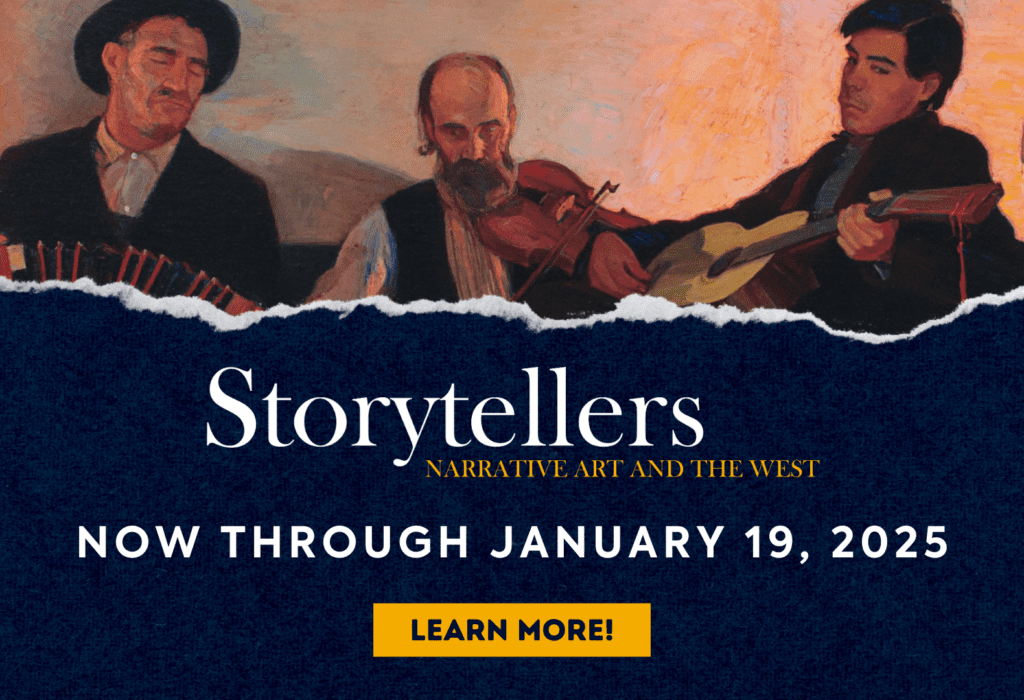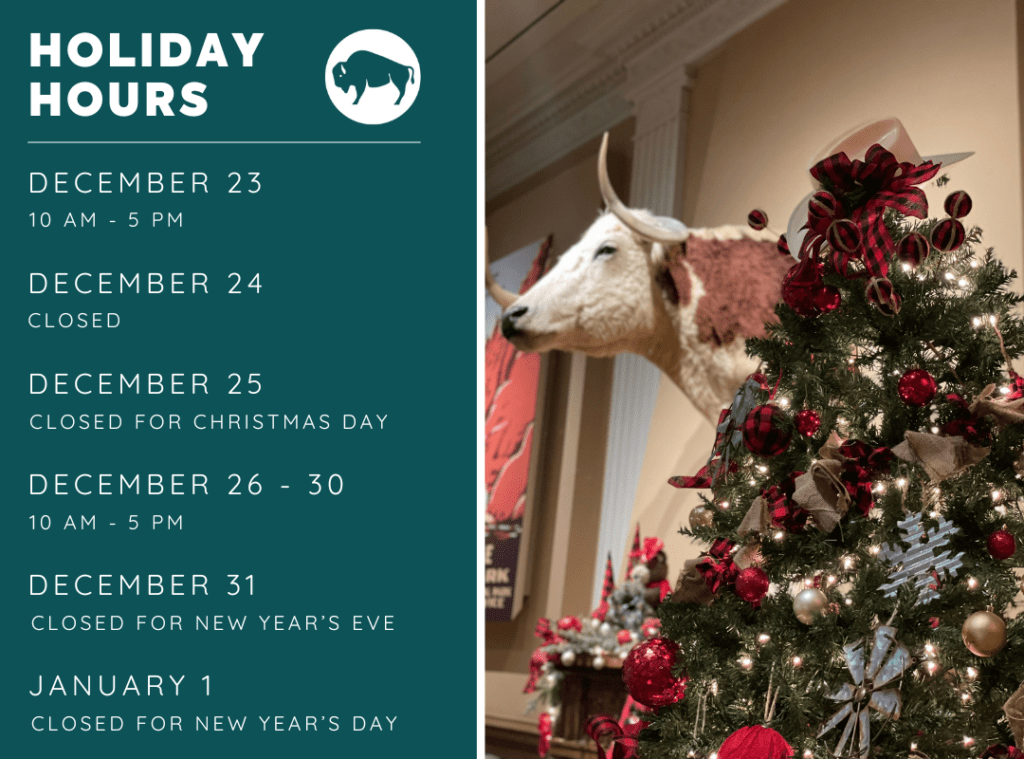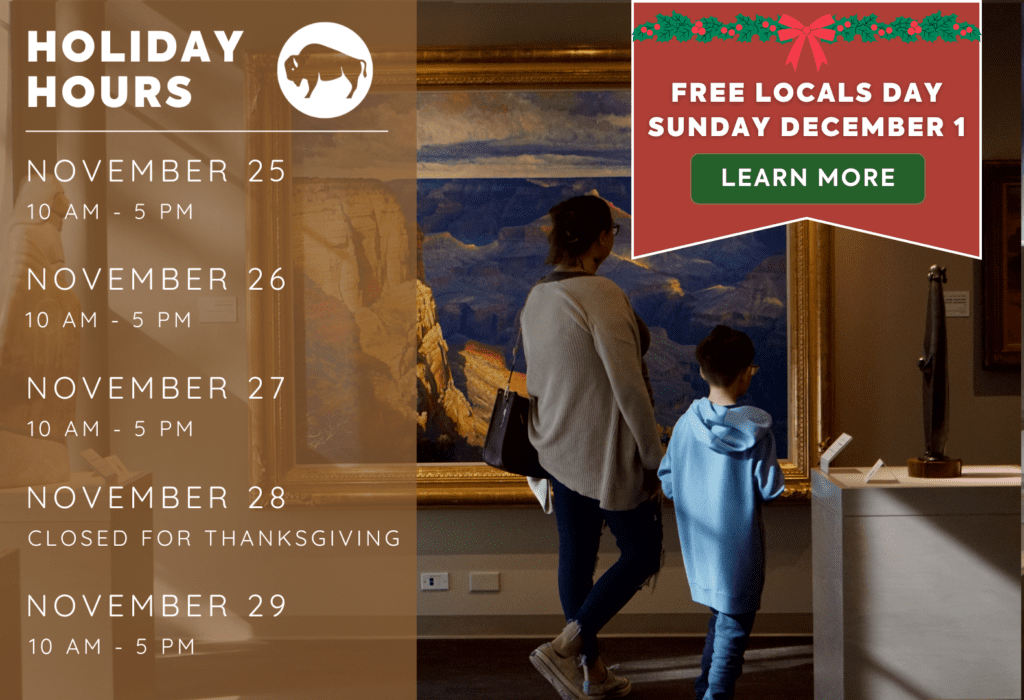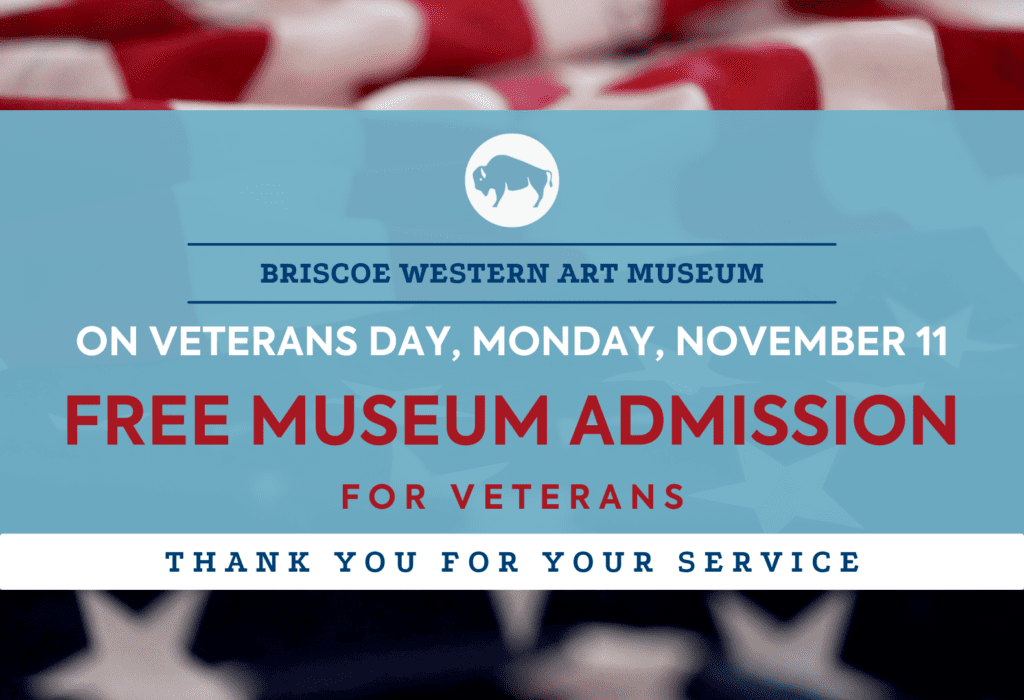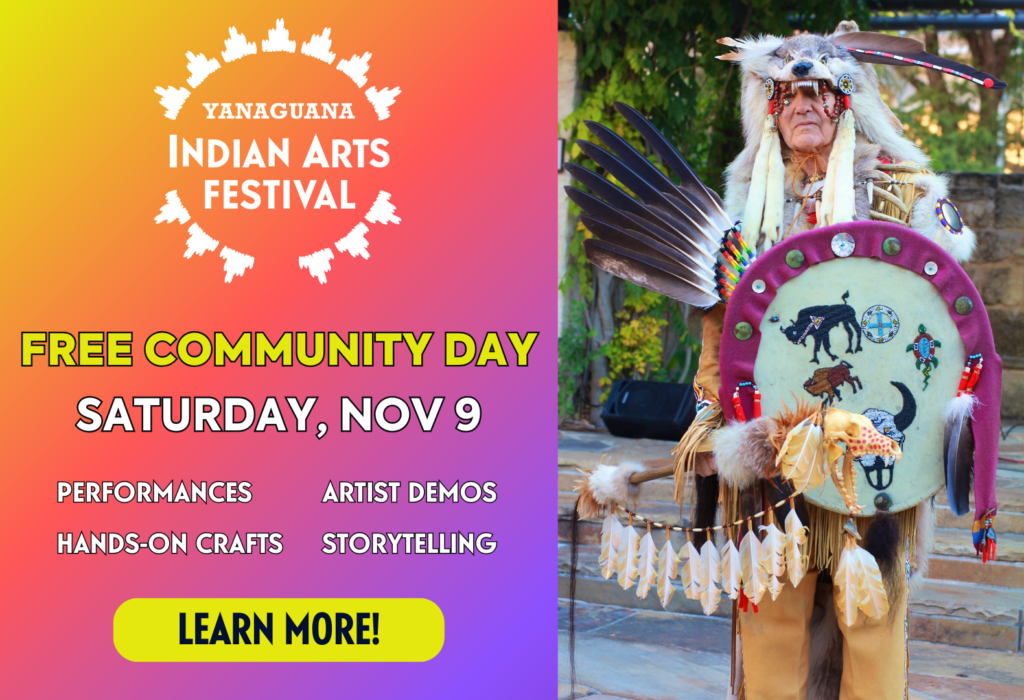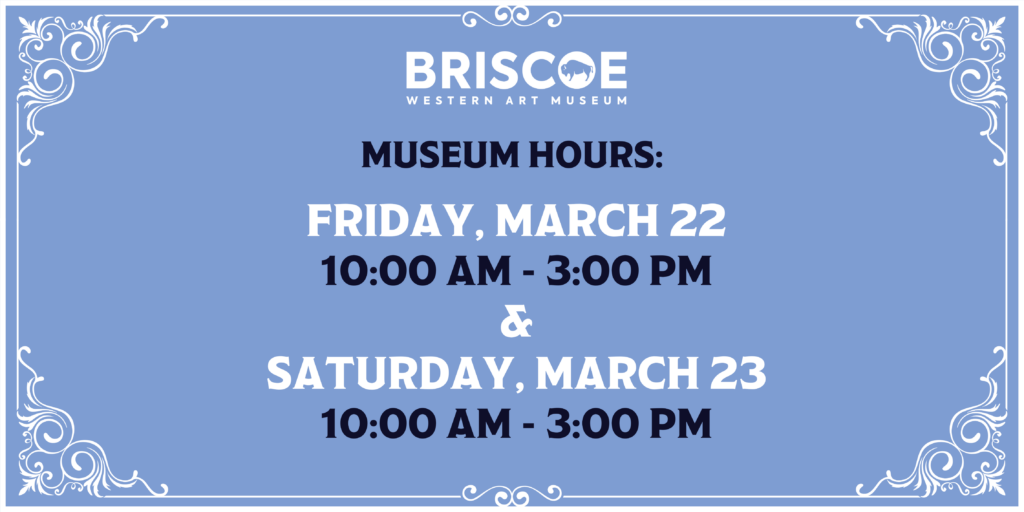Kim Wiggins, Davy Crockett and the ‘New West’

For the past two years, when someone approaches the Night of Artists exhibition from the second floor, the viewer cannot help but be struck by the vibrant color and style of Kim Wiggins’ work. Wiggins, a modern expressionist, whose heart is clearly in his Western subjects, has a distinctive style that draws the viewer in from across the room. His work is indicative of a clear, new voice in the Western art world.
One of Wiggins’ pieces from Night of Artists 2019 hangs on the second floor mezzanine gallery, alongside the works of the Taos Society of Artists. This piece, Colonel Crockett Returns from Cibolo Creek, shows a scene in which Davy Crockett comes thundering back into the Alamo fortress, followed by a group of volunteers. Crockett seems perfectly at ease, with one hand gripping his horse’s reigns and the other holding on to his trusted rifle “Betsy.” This moment of return represented a sense of momentary rising hope in an otherwise hopeless chapter in history. This event was originally related by Susannah Dickinson, Alamo survivor and widow of Captain Almaron Dickinson, years after the battle. Though certain details from Dickinson’s account did not always correlate to historical records (the fact that Crockett, at age 50, was the second-oldest man in the Alamo at the time of the battle), her memory was clear on one point; Davy Crockett was a hero.
Crockett had been a frontier legend before coming to Texas. His autobiography describes his wilderness adventures, and how he killed 105 bears in a single year! Tales of his exploits grew to such a degree that his life was immortalized in James Hackett’s popular play “The Lion of the West.” Not only was he remembered as a rifle-toting hunter in theater but also in “dime novels” and in portraits. Truly, Crockett stood out among the frontiersmen of the day, and his popularity among the legendary figures in American history has endured for over 200 years. Part of what has kept Crockett in the public memory are the artists who have maintained his image, wearing buckskins and his ‘coonskin’ cap, often in the throes of his last stand. While many western artists from 1827 to the present have worked to capture Crockett’s likeness; there is something distinct about Wiggins’ rendition, he captures the spirit of Crockett’s memory.
Wiggins, an artist with strong ties to his family’s western ranching traditions, approaches western themes with bold colors that cannot help but grab a viewer’s attention. His meticulous brush-work and stylized linearization are almost hypnotic in their appeal. Beginning his career as an impressionist, Wiggins worked to develop an evocative style that could easily be picked out of a crowd. This style and the artists’ love of the subject and his attention to a pivotal moment in the Siege of the Alamo are apparent in this piece. Crockett rides at the head of the group, mounted on a healthy black horse All eyes in the fortress turn to him to see the result of his expedition, and if it will be enough to save them. His proportions are larger than life and (to those familiar with the story) he brings hope.
Though Wiggins is not the first to tackle themes dealing with the Battle of the Alamo, far from it, he does bring a fresh style to the work that appeals to a new generation. Crockett had maintained a level of popularity in the American imagination from the time he fell in 1836. Never was he more popular than in the mid-1950s and early 1960s when he was depicted by Fess Parker and John Wayne. The generation that grew up with these interpretations continues to remember Davy Crockett (and probably know all the words to his theme song too). However, the cultural shifts of the past 50 years that has taken place in the United States have caused many historical “heroes” to decline in popularity, including Crockett. Nevertheless, Wiggins’ ability to represent Western themes with such flair has caused visitors to the Briscoe Western Art Museum to stop and take notice. Through his work Wiggins, and other Western modernists, have been able to speak to new and younger audiences in a different language, so to speak; their ‘New West’ approach to Western themes has served to create a greater degree of interest and relevance in the genre, showing the viewers the value of history and hope in anxious times.
This blog entry was written by our Curator of Collections, Ryan Badger. Ryan has been at the Briscoe for 3 years and his primary focus as Curator of Collections is crafting the stories of the collection.
BECOME A MEMBER
Help us bring the spirit of the West alive by becoming a Briscoe Partner!
Click here to become a member!
SUPPORT THE MUSEUM
Governor Dolph Briscoe and his wife Janey envisioned a Museum that would preserve the stories and traditions of the American West.
